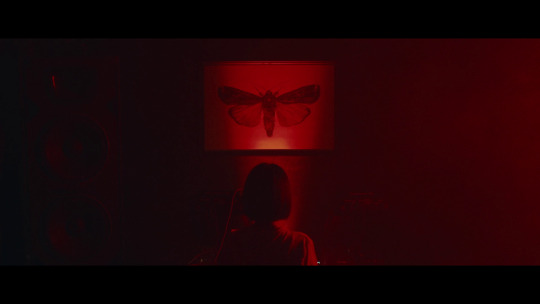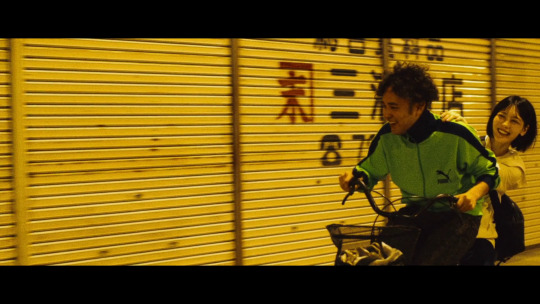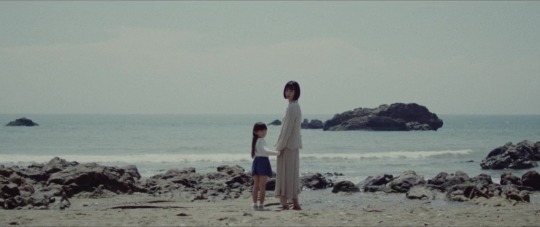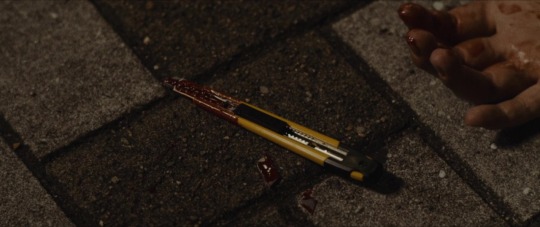#Keishi Kondo
Text










14 notes
·
View notes
Text







New Religion
(Keishi Kondo, 2022)
#film#jfilm#japan#japanese film#japanese cinema#New Religion#NewReligion#ニューレリジョン#Keishi Kondo#KeishiKondo#Kondo Keishi#KondoKeishi
6 notes
·
View notes
Text





1 note
·
View note
Text
New Religion ニューレリジョン (2022) Director: Keishi Kondo [Osaka Asian Film Festival 2023]
New Religion ニューレリジョン Director: Keishi Kondo [Osaka Asian Film Festival 2023] @oaffpress #OAFF2023 @NEWRELIGION15 @kkfilm_archive
New Religion
ニューレリジョン 「Nyu- Rerijon」
Release Date: 2023
Duration: 100 mins.
Director: Keishi Kondo
Writer: Keishi Kondo (Screenplay),
Starring: Kaho Seto (Miyabi), Satoshi Oka (Photographer), Ryuseigun Saionji (Boyfriend), Daiki Nunami,
IMDB
J-horror is effectively like a Frankenstein’s monster these days. When major studios resurrect a character like Ringu‘s Sadako or Ju-on‘s Kayako, there…

View On WordPress
#ニューレリジョン#Daiki Nunami#Japanese Film#Japanese Film Review#Kaho Seto#Keishi Kondo#New Religion#Osaka Asian Film Festival#Osaka Asian Film Festival 2023#Ryuseigun Saionji#Satoshi Oka
1 note
·
View note
Text
0 notes
Text
Saitou Hajime - 2010 Japanese Wiki Entry
From the Japanese-English Bilingual Corpus of Wikipedia’s Kyoto Articles . This is a translation from Saitou Hajime’s Japanese wiki entry, exactly as it was in 2010. It is taken from PNM00087 in that collection.
For information on the database and how to use it, please check this post.
Just like English wikipedia, none of this information is guaranteed to be accurate. It’s not a current version of the Japanese article either.
Saitou’s article is translated in the worst English I’ve seen so far in this database, but it’s readable. The names of organizations, either too literally translated into English, or not translated at all when they should be, make it way more complicated than it should be.
It’s not hugely extensive, but there’s enough interesting information in it that I decided to make it the third entry in this series. I particularly was interested by the small paragraph on his experiences in the Seinan War aka the Satsuma Rebellion.
The translated sentences used in this service contain English contents which are translated by the National Institute of Information and Communications Technology (NICT) from Japanese sentences on Wikipedia. My use of these translated sentences is licensed by the Creative Commons Attribution-Share-Alike License 3.0. Please refer to http://creativecommons.org/licenses/by-sa/3.0/ or http://alaginrc.nict.go.jp/WikiCorpus/ for details.
HAJIME SAITO
Hajime SAITO (February 18, 1844 - September 28, 1915) was a samurai who was active from the end of the Edo period to the Meiji period. He was an officer of the Shinsen-gumi masterless warrior party. He served as a leader of Sanban-tai troop or a grand master of the Gekken martial art in the Shinsen-gumi masterless warrior party.
In the Meiji period, he was promoted by Keishi-kyoku (a precursor to the Tokyo Metropolitan Police Department) of the Interior Ministry and became a commissary (as a police officer was then called). He held the rank of an assistant police inspector.
He served in the Seinan War as a member of Betsudo-Daisan-ryodan (the third stand-alone brigade), which consisted of commissaries.
Biography
His Place of Origin
He was born as the second son of Yusuke YAMAGUCHI, who had years of experience as a masterless samurai in the domain of Akashi and had become a vassal of Hatamoto (a direct retainer of the shogun), the Suzuki family holding 1,000 koku as its kokudaka (stipend). Some records state that he was from the domain of Aizu, but they are not considered primary materials.
Other materials state that when he was in Edo he would hang out in Isami KONDO's kendo training hall, the Shieikan training hall, but when KONDO had all the members of Shieikan training hall staying in Kyoto bring weapons to him, SAITO was not included among the members.
On April 27, 1863, a group of 13 people, including Kamo SERIZAWA and Isami KONDO formed Mibu-Roshigumi (the Mibu masterless warrior group), which was also called Seichu-Roshigumi, the predecessor of the Shinsen-gumi masterless warrior party. They belonged to the domain of Aizu, in which the lord of the domain, Katamori MATSUDAIRA, was in the office of Kyoto Shugoshoku (Military Governor of Kyoto) Title. On the same day, 11 people (including SAITO) joined the group.
Another legend states that he had been a cenacle along with KONDO since the years at the Shieikan training hall, and that he had gone to Kyoto with KONDO, but in any case SAITO's journey to Kyoto was separate from that of KONDO. However, the people who went to Kyoto with KONDO didn't take joint actions.
Later, SAITO, who was then 20 years old, was promoted to Fukucho-jokin (third-rank of Shinsen-gumi masterless warrior party) in the election of the cadre of the Shinsen-gumi masterless warrior party.
While Soji OKITA may generally be considered the youngest man among the cadre of the Shinsen-gumi masterless warrior party, the youngest was SAITO (there are several different opinions about OKITA's date of birth).
He became a group leader upon the organizational restructuring and served as a grand master of the Gekken martial art.
In April 1867, when Kinetaro ITO left the Shinsen-gumi masterless warrior party to form the Goryo-eji (guardians of Imperial mausoleums), party, he left the party with ITO, but eventually he rejoined the Shinsen-gumi masterless warrior party. Some theories assert that he stole the war chest from the Goryo-eji party or had originally infiltrated as a spy for the Shinsen-gumi masterless warrior party, but his acts during this period of time have not been clarified in terms of the facts and motives. Another theory states that the Abura-no-koji Incident, in which the Shinsen-gumi masterless warrior party assassinated ITO, had occurred based on the information given at the time SAITO returned.
In the Tenmaya Incident, which occurred on January 1 in 1868, he guarded Kyutaro MIURA, the feudal retainer of the Kishu domain, at the request of the domain. While the Shinsen-gumi masterless warrior party was holding an alcohol-drinking party with MIURA, they were beaten by an attack from members of the Kaientai (Japan's first modern corporation established by Ryoma SAKAMOTO) and suffered damage such as the deaths of Nobukichi MIYAGAWA and Kamataro FUNAZU as well as serious injuries to Katsunoshin UMEDO, which occurred in an effort to help SAITO, but the Shinsen-gumi masterless warrior party was successful in its effort to guard MIURA.
He continuously fought the Battle of Toba and Fushimi in January 1868 and the Battle of Katsunuma (Koshu Province) in March 1868. He fought on the front line in both battles.
After KONDO surrendered to the new government army in Nagareyama City, he separated from Toshizo HIJIKATA and other members who remained in Edo, and departed for Aizu, leading a number of officers. However, a different theory asserts that at this time SAITO was absent from the line of battle due to his injuries and was not in Nagareyama. According to that theory, the person who had departed for Aizu leading officers was either Masachika KUMEBE or Saisuke YASUTOMI.
After HIJIKATA injured his leg in the Battle of Utsunomiya Castle in April of the same year and therefore left the line of battle, he arrived at the castle town of Wakamatsu via Tajima and got together with SAITO and others. The Shinsen-gumi masterless warrior party, including SAITO, came under the command of the domain of Aizu and fought in the Battle of Shirakawaguchi on the 26th of intercalary month of May, as well as the Battle of Bonari-toge on October 6.
The Shinsen-gumi masterless warrior party retreated to Tsurugajo Castle due to the defeat in battle.
Amid their retreat, the Shinsen-gumi masterless warrior party joined HIJIKATA in Inawashiro Town. Later, HIJIKATA departed for the domain of Shonai and a battery of former retainers of shogun, including Keisuke OTORI, went to Sendai to fight, but SAITO remained in Aizu and continued to fight against the new government army outside the castle with feudal retainers of the Aizu domain.
After the Aizu domain surrendered on November 6, SAITO continued to fight, but eventually, an envoy sent from Katamori persuaded him to surrender to the new government army.
After his surrender, he initially lived in suspension in Shiokawa in the former domain of Aizu, but later lived in Echigo-Joetsu City, along with feudal retainers of the Aizu domain who had been taken as prisoners.
After the surrender, the Aizu domain fell subject to Kaieki (the samurai's forfeiture of rank and property), and the Matsudaira family became subject to Kamei-Danzetsu (forfeiture of the family name) but on November 3, 1869 was given the right to rebuild the family. The chigyo (fief amount) was set at 30,000 koku in Mutsu Province, and the Matsudaira family was directed to choose either Inawashiro or Shimokita as the domain territory. The former domain's cadre, including Hiroshi YAMAKAWA, had been taken prisoner in Tokyo and chose Shimokita without consulting with the feudal retainers who were held in suspension at Takada. It was newly named as the domain of Tonami.
SAITO departed for Shimokita Peninsula as a feudal retainer of the Tonami domain. SAITO moved to Gonohe, in the territory of the Tonami domain, and entered his first marriage, to Yaso SHINODA. The Shinoda family was an important family able to be acknowledged from "Shoshi Keifu" (retainers' genealogies) and belongs to highly persons as feudal retainers of the Aizu domain. SAITO was a member of Chu-Nibantai troops in Byakkotai suicide corps and was remotely related to Gisaburo SHINODA who committed a suicide in Mt. Iimori (Fukushima Prefecture).
Later, SAITO married Tokio TAKAGI with the support of Katamori as Ue-Nakodo (a go-between after the engagement) and Kambe SAGAWA and Heijiemon KURASAWA as Shita-Nakodo (a go-between from the marriage meeting to the engagement). SAITO and Tokio had three sons: Tsutomu, the eldest; Tsuyoshi, the second; and Tatsuo, the youngest son. All three sons married woman from the Tonami domain.
Later, he moved to Tokyo. He applied for employment with a commissary that had recently been established, and was hired. In February 1877, he was appointed to the position of assistant police inspector of Keishi-kyoku.
On February 15 of that year, the Seinan War broke out. He joined the Bungoguchi Keishi Chobotai (Bungoguchi Enlisted Commissary Troops) as a member of the "Army Cutting with a Gouge," and in May of the same year he took part in a battle. During the battle he suffered a gunshot, but he prevailed over the Satsuma warriors with his gifted sword technique and generalship.
He played an important role, as it was even reported in newspapers of those days that he had captured two big guns.
In 1891, he retired from Keishi-cho and then worked as a security guard at Tokyo Higher Normal School, etc.
He died of a gastric ulcer on September 28, 1915. According to one legend, he died while seated in an alcove. He was 72 years old. His tomb is located at Amida-ji Temple in Aizu-Wakamatsu City
Personal Profile
His school of swordsmanship is said to have been either the Itto-ryu school or the Mugai-ryu school, but the truth is not known.
There is a theory that SAITO was left-handed, but it has little likelihood of being a historical fact. He is described as left-handed in some of the fiction written by novelists, etc., in later years, but in the pictures produced by Nobori NAKAJIMA he was shown holding a sword in the same position as a right-handed person.
He was said to be one of the strongest swordsmen in the Shinsen-gumi masterless warrior party, along with Soji OKITA and Shimpachi NAGAKURA.
NAGAKURA told his followers that "Okita is a swordsman of valor, but Saito is one of invincibility."
He used the name 'Hajime SAITO' from the relocation in Kyoto through the heyday of the Shinsen-gumi masterless warrior party. His first name was Hajime YAMAGUCHI. According to legend, his first name "Hajime" originated from his birthday (January 1), but there is no historical basis for this assumption.
In 1862, he ran away to Kyoto since he was involved in a sword-cut incident in Edo, and changed his name to Hajime SAITO. In 1867, he changed his name to Jiro YAMAGUCHI. During the period of his involvement in the Boshin War, he belonged to the domain of Aizu, and he identified himself as Dempachi ICHINOSE. After he moved into the domain of Tonami, he changed his name to Goro FUJITA. He was registered as 'Goro FUJITA' in Jinshin-koseki (family registries in Jinshin) in 1872.
While there is a theory that Hajime SAITO and Goro FUJITA were two distinct persons, currently the "different person story" is denied due to the findings that Goro FUJITA had signed invoices of government pension for his older blood brother, Hiroaki YAMAGUCHI, as his relative and that the writing of the 'Fujita Family's notes' belonging to Goro FUJITA's offspring started in the first year he identified himself as Hajime SAITO.
53 notes
·
View notes

